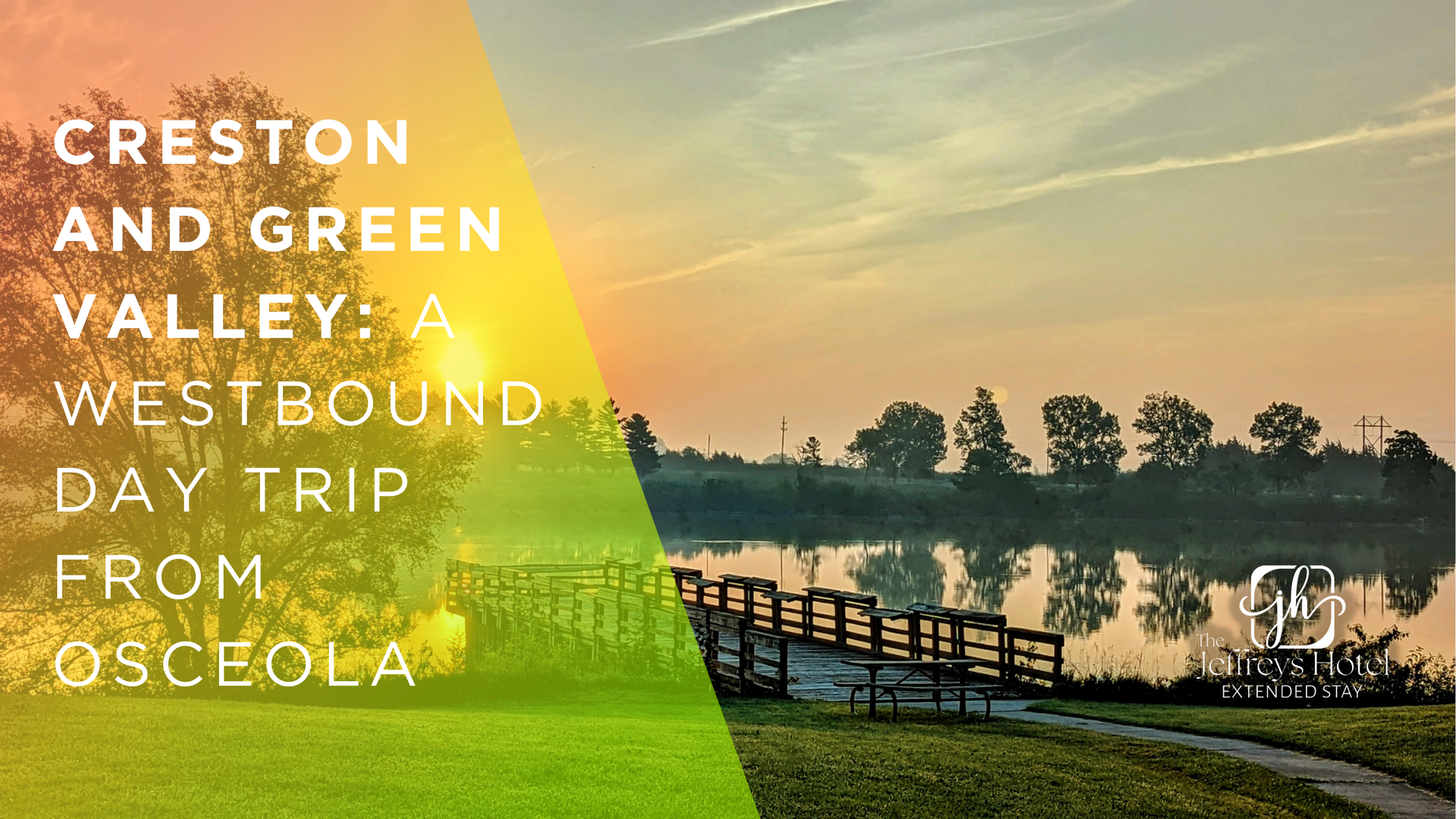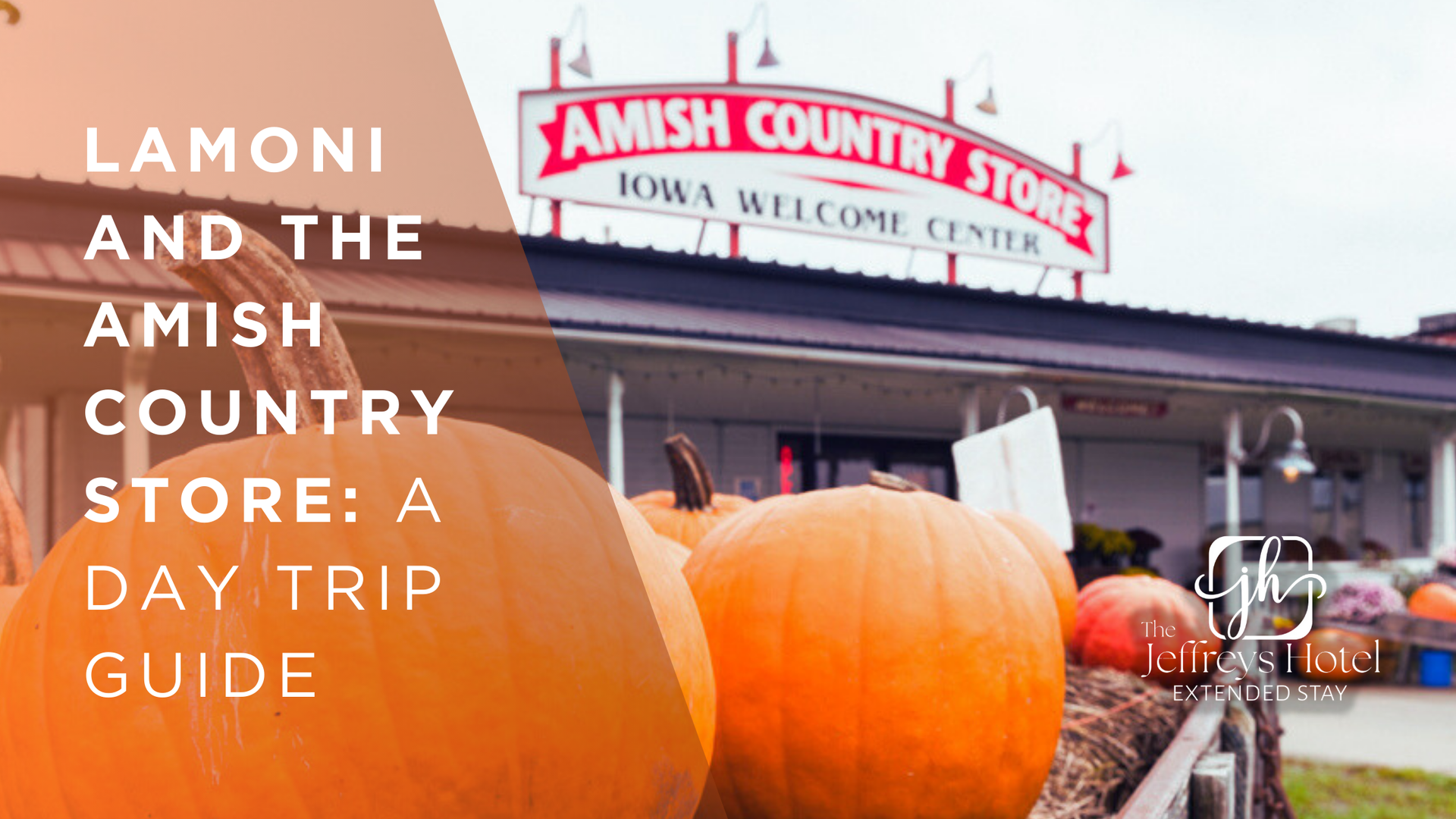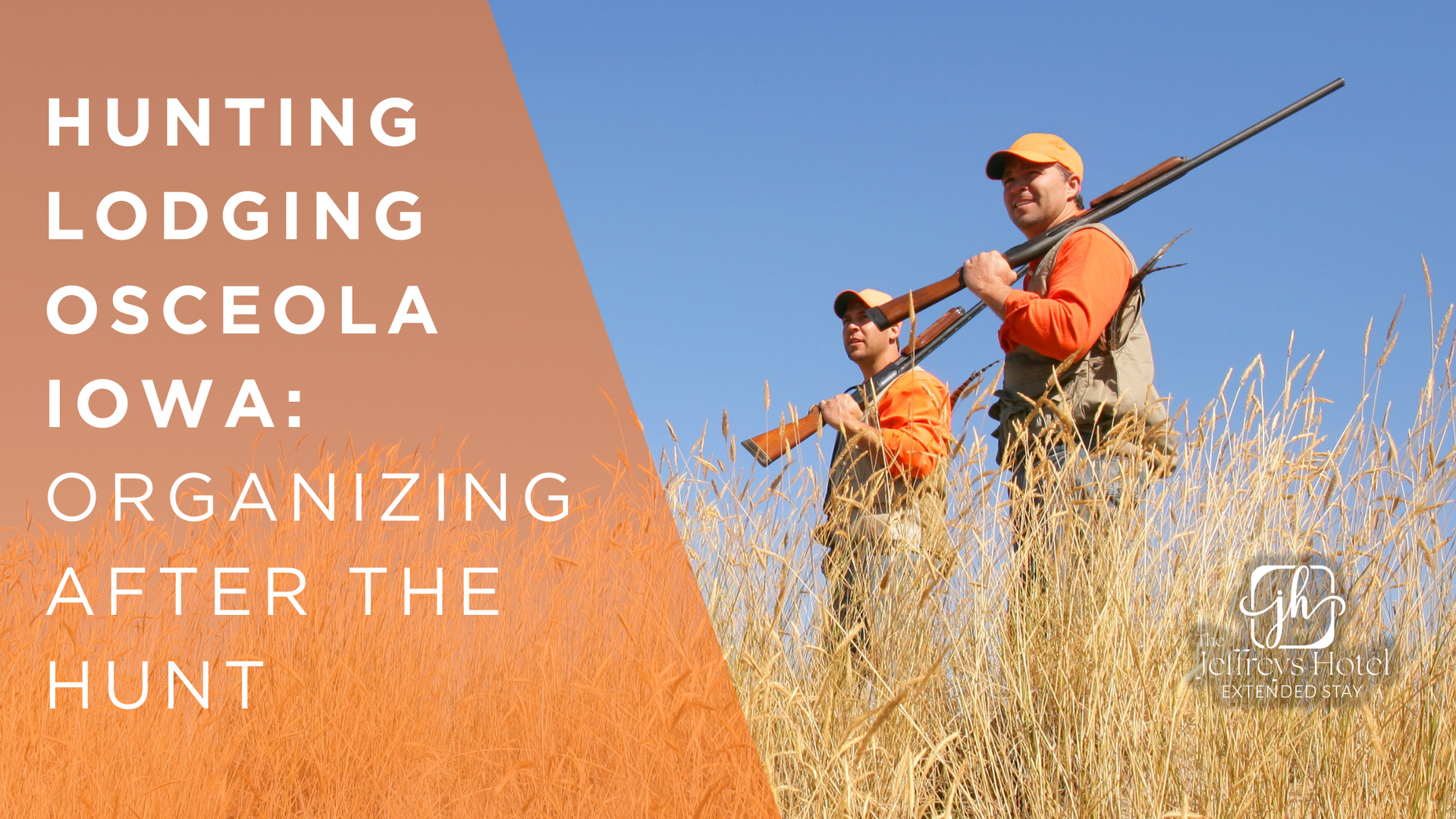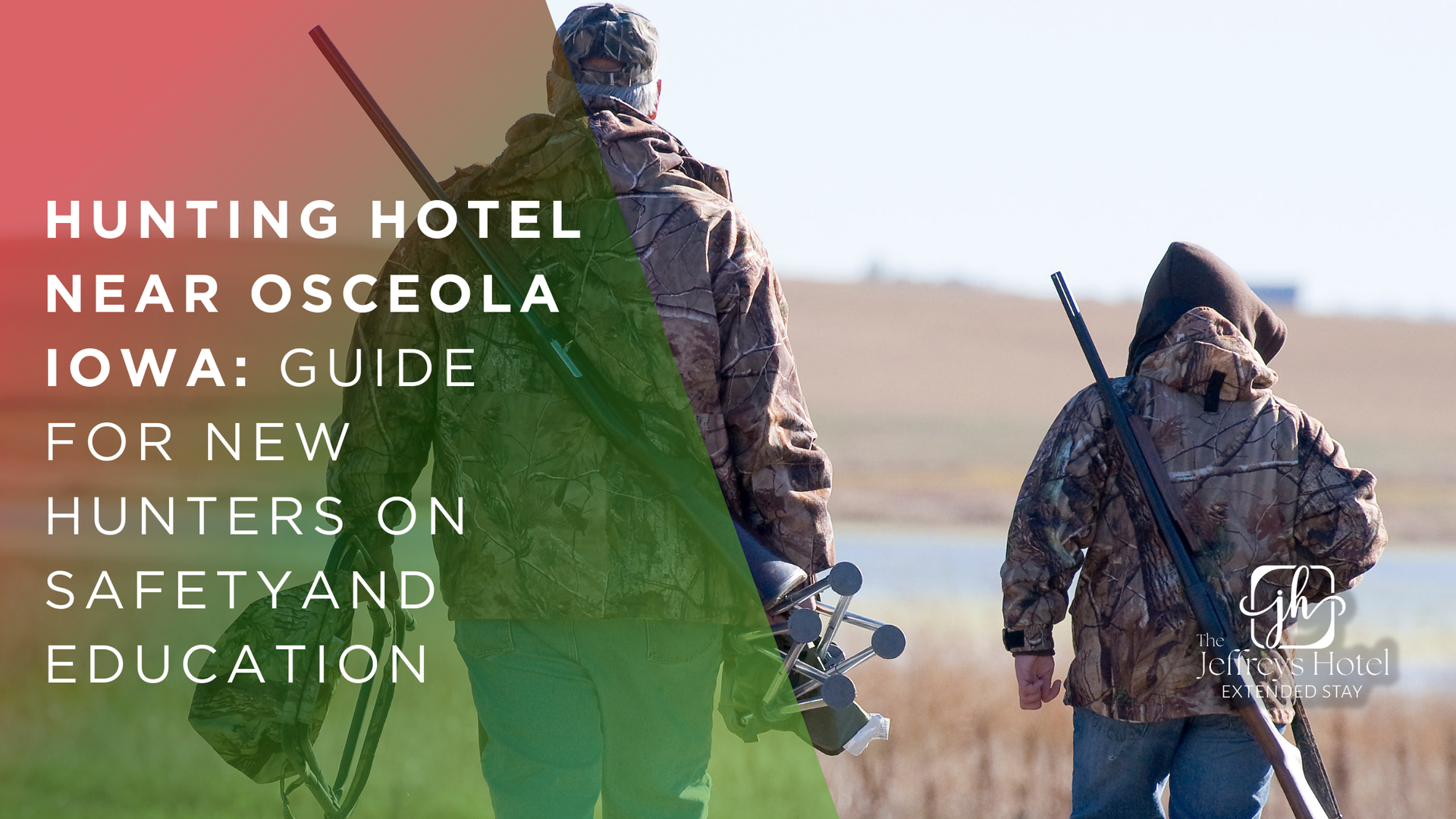Birding near Osceola: easy spots and what you might see
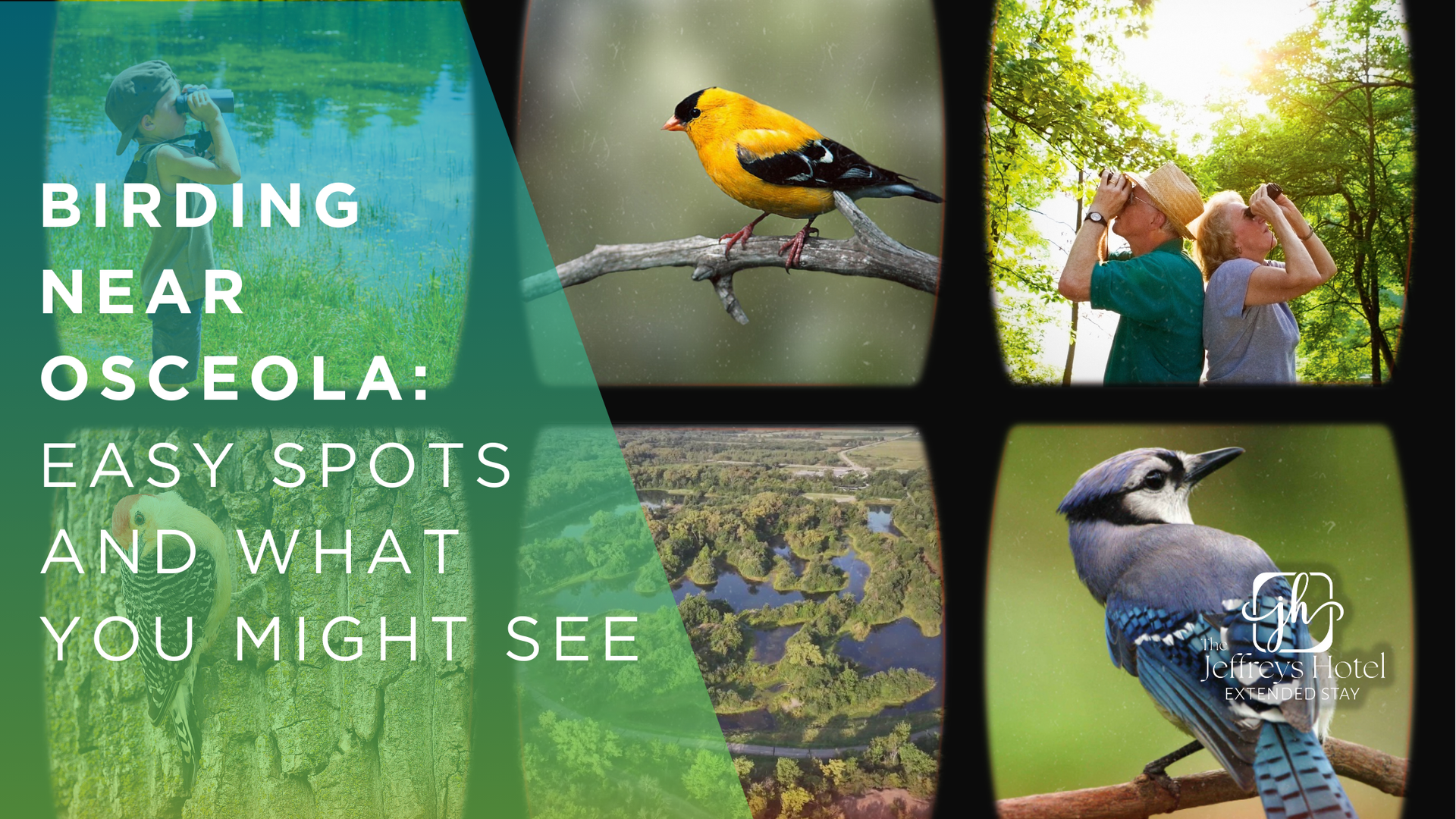
You do not need fancy gear to enjoy birds around Osceola. A quiet hour, a short walk, and a simple pair of binoculars are enough. Here is a friendly starter guide with easy places to go, what you might see, and a calm way to share the trail.
Where to go for a simple first birdwatch outing in Osceola:
East Lake Park
Close to town with a paved loop, docks, and benches. Good for a slow lap and easy looks at geese, ducks in spring and fall, great blue herons in warm months, and red winged blackbirds in the cattails. Park by the shelters and walk the water’s edge.
Q Pond Park
Small lake with a loop trail and plenty of edges to scan. Watch for swallows over open water, woodpeckers on snags, and warblers moving through in spring. Mornings are calm and shady.
Grade Lake Park
A quiet shoreline walk with benches and trees. Listen for chickadees and nuthatches in winter, orioles in spring, and the buzz of kingfishers skipping the water in summer.
Stephens State Forest
Tall timber, open lanes, and seasonal songbird movement. Walk slowly, pause often, and watch for wild turkey along roads at dawn and dusk. This is your single outbound planning link for maps and unit updates: Stephens State Forest.
Month by month… what birds you might see
- January to February: Chickadees, nuthatches, woodpeckers in timber. Bald eagles near open water on mild days.
- March: Early ducks on local lakes, red winged blackbirds staking out cattails, bluebirds on fence lines.
- April: Mixed waterfowl, herons returning, first wave of warblers and kinglets in brushy edges.
- May: Peak songbird month. Orioles, rose breasted grosbeaks, more warblers. Listen at sunrise for the most activity.
- June: Nesting season. Swallows over lakes, wrens in shrubs, turkey poults along quiet roads at Stephens.
- July: Quiet midday. Go early or late. Herons, egrets, and dragonflies share the shallows.
- August: Shoreline edges wake back up. Watch for migrating swallows and the first hints of fall movement.
- September: Strong southbound flights. Hawks on breezy days, hummingbirds at flowers, mixed flocks along field edges.
- October: Sparrows in prairie patches, late warblers, and big rafts of ducks on windy lakes.
- November to December: Gulls and late ducks on larger water, eagles near open pockets, backyard birds steady on cold mornings.
What to bring so it stays easy
- Binoculars if you have them, or use your eyes and a phone camera for distant looks.
- Small notebook or phone notes to jot a few sightings.
- Water, a snack, and a light layer for cool mornings.
- A simple checklist for kids so they can spot and circle three birds.
Quiet trail etiquette
- Walk slow, talk soft, and give other visitors space.
- Stay on paths, keep dogs leashed, and skip recorded bird calls.
- Pack out any trash. A cleaner edge means better birding for everyone.
A one hour plan you can copy
- Minute 0 to 10: Park at East Lake. Look across open water for ducks and geese.
- Minute 10 to 40: Walk the loop. Stop at shady corners. Scan low branches for movement.
- Minute 40 to 60: Sit on a bench. Listen. Note three birds you saw or heard.
If you're staying at The Jeffreys Hotel Extended Stay, birding pairs well with early coffee or a calm evening walk. Short drives, simple paths, and a comfortable room to come back to… that is an easy win for a busy week.
|
More from the Hotels in Osceola Iowa Blog



